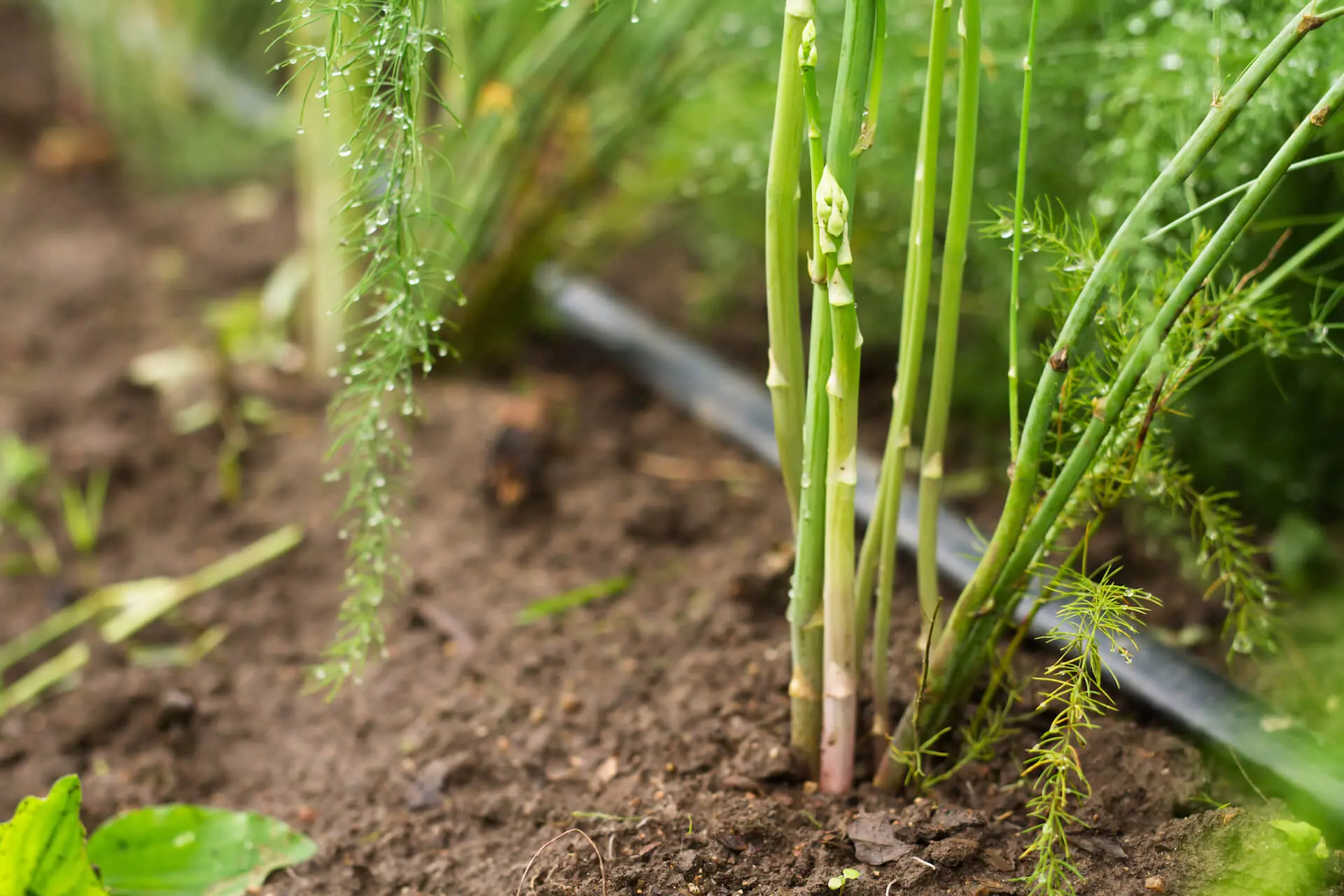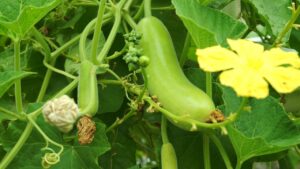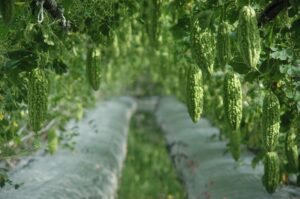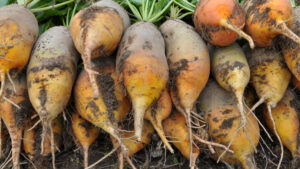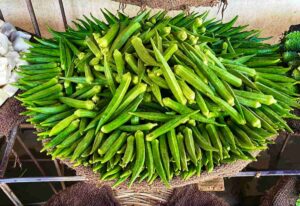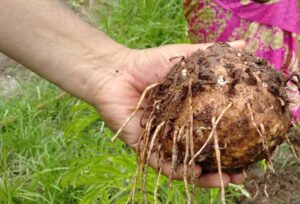How to Plant Asparagus: A Complete Guide for Home Gardeners
Asparagus (Asparagus officinalis) stands out as one of the few perennial vegetables that can produce harvests for 15-20 years once established. This nutritious, early-spring delicacy brings gourmet flavor to your table and adds significant value to your property. Whether you’re a seasoned gardener or a beginner looking to start your first vegetable garden, learning how to plant asparagus properly will reward you with decades of delicious spears.
Why Grow Asparagus?
Before diving into planting techniques, let’s understand why asparagus deserves a place in your garden:
- Long-term investment: While most vegetables require replanting annually, asparagus produces for up to 20 years from a single planting.
- Early harvest: Asparagus is one of the first vegetables ready for harvest each spring.
- Nutritional powerhouse: Rich in vitamins A, C, E, K, and B vitamins, as well as folate and minerals.
- Economic value: According to USDA data, Americans consume approximately 1.7 pounds of asparagus per person annually, with fresh asparagus retailing between $3-6 per pound in U.S. markets.
- Low maintenance: Once established, asparagus requires minimal care compared to other vegetables.
Planning Your Asparagus Bed
Selecting the Right Location
Asparagus is a long-term commitment, so choosing the right location is crucial:
- Full sun: Select a spot that receives at least 8 hours of direct sunlight daily.
- Well-drained soil: Avoid areas where water pools after rain; asparagus roots will rot in waterlogged conditions.
- Dedicated space: Plant asparagus in a dedicated bed where it won’t be disturbed by annual tilling.
- Edge locations: Consider planting along garden borders or fence lines where the tall ferns won’t shade other crops.
- pH requirements: Asparagus thrives in soil with a pH between 6.5-7.5.
According to the USDA Natural Resources Conservation Service, asparagus grows naturally in USDA hardiness zones 4-8 but can be cultivated in zones 2-9 with proper care.
Timing Your Planting
The timing of your asparagus planting significantly impacts establishment success:
- Spring planting: Plant as soon as soil can be worked, typically 4-6 weeks before the last frost date.
- Fall planting: In southern regions (zones 7-9), fall planting can give roots time to establish before winter.
Selecting Asparagus Varieties
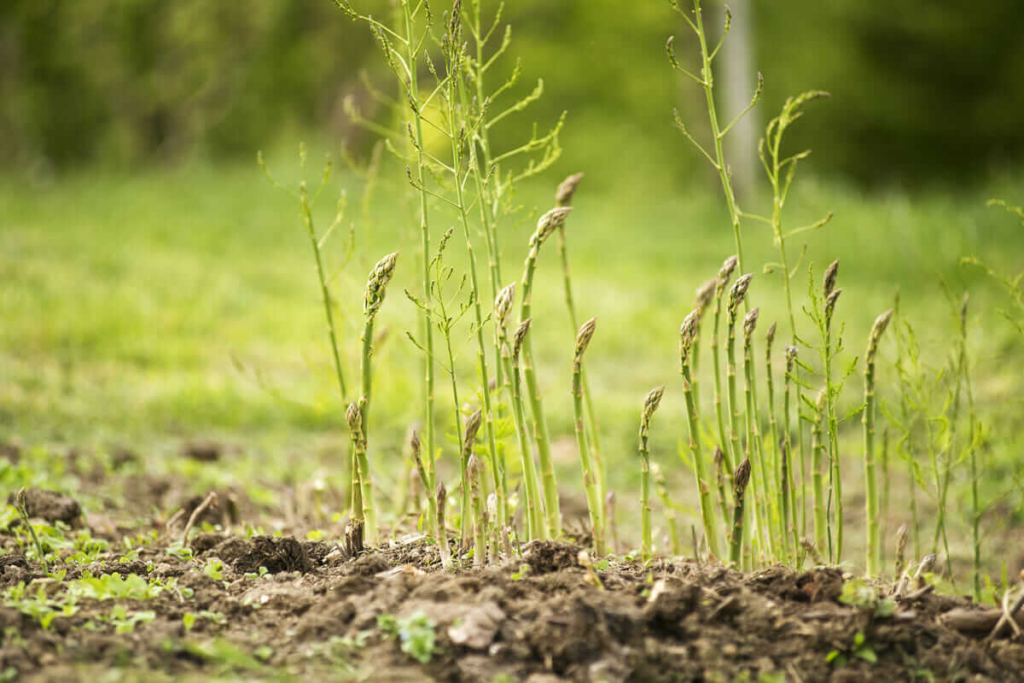
Male vs. Female Plants
Modern asparagus cultivation favors all-male hybrid varieties for several reasons:
- Higher yield: Male plants produce 3-5 times more spears than female plants since they don’t expend energy producing seeds.
- Bigger spears: Without seed production, male plants direct energy to spear size.
- No volunteer seedlings: Female plants produce berries that drop seeds, creating weed problems.
Popular Asparagus Varieties for U.S. Gardens
| Variety | Type | Features | Days to Harvest | Best For Zones |
|---|---|---|---|---|
| Jersey Knight | All-male hybrid | Disease-resistant, thick spears | 3 years | 3-8 |
| Jersey Supreme | All-male hybrid | Early producer, cold-tolerant | 3 years | 3-8 |
| Purple Passion | Heritage | Purple spears, sweeter flavor | 2-3 years | 4-9 |
| UC 157 | Hybrid | Heat-tolerant, good for southern regions | 2-3 years | 7-10 |
| Mary Washington | Heritage | Disease-resistant, traditional variety | 3-4 years | 3-8 |
| Millennium | All-male hybrid | Cold-hardy, high yield | 3 years | 2-8 |
Preparing the Planting Area
Soil Preparation
Proper soil preparation is critical for asparagus, which will occupy the same location for decades:
- Clear the area: Remove all perennial weeds, grass, and debris from the planting site.
- Soil testing: Test your soil to determine pH and nutrient levels. Most county extension offices provide affordable testing services.
- Deep tilling: Loosen soil to a depth of 12-15 inches, removing rocks and breaking up clumps.
- Add organic matter: Incorporate 4-6 inches of compost or well-rotted manure to improve soil structure and fertility.
- Adjust pH: Add lime if soil is too acidic or sulfur if too alkaline to achieve the ideal 6.5-7.5 pH range.
- Pre-planting fertilizer: Mix in 2-3 pounds of 10-10-10 fertilizer per 100 square feet.
Preparing Planting Trenches
For traditional in-ground planting, prepare trenches following these specifications:
- Dig trenches: Create trenches 12-18 inches wide and 6-8 inches deep.
- Spacing: Space trenches 4 feet apart if planting multiple rows.
- Add compost: Place 2 inches of compost in the bottom of each trench.
- Phosphorus boost: Sprinkle 1 cup of superphosphate or bone meal per 10 feet of trench.
- Create mounds: Form small mounds within the trench, spaced 18 inches apart.
How to Plant Asparagus at Home
Planting Crowns
Asparagus crowns (year-old dormant plants) are the most common starting material:
- Soak crowns: Before planting, soak crowns in compost tea or a seaweed solution for 20 minutes.
- Position crowns: Place each crown on a mound with roots spread outward like an octopus.
- Proper depth: The crown bud should sit 2 inches below the original soil level.
- Initial coverage: Cover crowns with 2 inches of soil mixed with compost.
- Gradual filling: As spears emerge, gradually fill trenches over the growing season until slightly mounded.
- Spacing: Space crowns 18 inches apart within rows, with 4-5 feet between rows.
Planting from Seeds
While less common, growing asparagus from seed can be economical:
- Indoor starting: Start seeds indoors 12-14 weeks before the last frost date.
- Soaking: Soak seeds for 24 hours before planting to improve germination.
- Planting depth: Sow seeds ¼-½ inch deep in seed-starting mix.
- Temperature: Maintain soil temperature at 70-85°F for optimal germination.
- Transplanting: When seedlings reach 10-12 inches tall and danger of frost has passed, transplant to prepared beds.
- Extended timeline: Expect an additional year before harvest compared to crowns.
How to Plant Asparagus in Containers
For urban gardeners or those with limited space, container planting is possible:
- Container selection: Choose containers at least 24 inches deep and 20 inches in diameter.
- Drainage: Ensure excellent drainage with multiple drainage holes.
- Growing medium: Use a mixture of 60% topsoil, 30% compost, and 10% sand or perlite.
- Planting density: Limit to 3 crowns per 20-inch container.
- Overwintering: In cold regions, insulate containers or move to protected areas during winter.
Caring for Young Asparagus Plants

First-Year Care
Proper first-year care establishes strong plants for future production:
- Watering: Provide 1-2 inches of water weekly during the first year.
- Weed control: Gently hand-weed to avoid disturbing shallow roots.
- Mulching: Apply 3-4 inches of organic mulch to suppress weeds and retain moisture.
- No harvesting: Resist the temptation to harvest any spears during the first year.
- Fern growth: Allow all spears to develop into ferns which photosynthesize and strengthen the crowns.
- Winter care: After ferns turn yellow in fall, cut them back to 2-inch stubs.
Second-Year Care
Continue building plant strength:
- Spring feeding: Apply 1-2 pounds of balanced fertilizer per 100 square feet in early spring.
- Limited harvest: Harvest lightly for 2-3 weeks only, allowing most spears to develop into ferns.
- Summer care: Maintain weed control and adequate moisture through summer.
The Asparagus Market in the U.S.
The U.S. asparagus market presents opportunities for home gardeners looking to offset costs or potentially sell surplus:
- The U.S. asparagus industry is valued at approximately $80 million annually.
- California, Washington, and Michigan lead U.S. production.
- Local farmers’ markets often command premium prices for fresh asparagus, ranging from $4-8 per pound.
- According to the USDA Economic Research Service, U.S. per capita consumption has grown steadily over the past decade.
Harvesting Your Asparagus

When to Start Harvesting
Patience yields the greatest long-term harvests:
- First year: No harvest; allow plants to establish.
- Second year: Limited harvest of 2-3 weeks.
- Third year: Moderate harvest of 4-6 weeks.
- Fourth year and beyond: Full harvest for 8-10 weeks.
Proper Harvesting Technique
To maintain plant health and productivity:
- Timing: Harvest spears when they reach 7-9 inches tall and before tips begin to open.
- Method: Cut or snap spears 1-2 inches below soil level.
- Frequency: Check your asparagus bed daily during harvest season; spears can grow 5-8 inches in a single day under ideal conditions.
- End of season: Stop harvesting when most spears are thinner than a pencil.
Common Asparagus Problems and Solutions
Pests
- Asparagus beetles: Handpick or treat with neem oil or insecticidal soap.
- Cutworms: Use cardboard collars around emerging spears.
- Aphids: Spray with strong water stream or insecticidal soap.
Diseases
- Fusarium root rot: Plant resistant varieties; avoid replanting asparagus in affected areas.
- Asparagus rust: Ensure good air circulation; remove affected plants.
- Crown rot: Improve drainage; avoid overwatering.
Conclusion
Planting asparagus requires an initial investment of time and patience, but few garden endeavors offer such long-lasting returns. By selecting the right site, preparing your soil thoroughly, and providing consistent care, you’ll establish a productive asparagus patch that delivers fresh, tender spears each spring for decades to come.
Whether you’re growing in a spacious garden plot or experimenting with container cultivation, the techniques outlined in this guide will help you succeed. As your asparagus patch matures, you’ll enjoy the incomparable flavor of freshly harvested spears—and perhaps even supply your local market with this sought-after spring delicacy.
For more detailed information on asparagus varieties and cultivation practices, visit the USDA Agricultural Research Service website, which provides research-backed recommendations for asparagus cultivation across different U.S. regions.
